Lily Charovid, truly real work of art created by the "Mother Nature". Large graceful purple painting flowers fascinate look and deliver real aesthetic pleasure. It is especially nice that growing a similar "miracle flower" under the power of anyone who wants. What place to choose for lily bulbs? How to put on the bulbs in the ground? What care is needed by a loyal? All these and many other questions are revealed in the article.
Lily Charov, Plant Features
The genus of lily refers to the family of Lily and is a long-term bulbous herbaceous plant.
- Character lily - a typical representative of the Asian group of hybrids. A feature of this variety of lilies is the predisposition of the plant to fascia, i.e. Deformation and the captivity of several stems. As a result, a huge amount of buds is formed on a powerful stem, with whom the plant resembles a "blooming ball".
- The phenomenon of the fasciance (mutations) is random and depends on the effects of external factors. Such factors can be the use of fertilizers, biological stimulants, the effect of abnormal climatic conditions and even random mechanical damage to the planting material (bulbs). During the fascia, not only stem, but also the bulb itself is thickened. Increasing thickened stem will be noticeable at initial germination from the bulbs. Only mature lilies at the age of 2-3 years can mutate in a similar way, and even then, not every year, everything is sophisticated from the impact of the above factors.
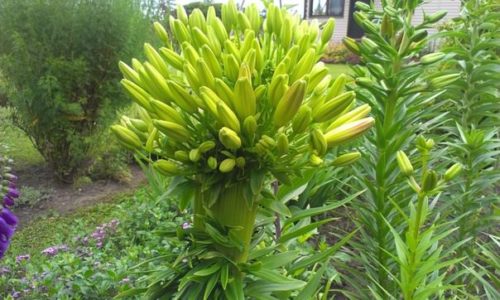
- The Marlen grade variety is considered the most common variety of spherical lily. Such an unusually beautiful name variety received in honor of the beloved German song, known since the time of the II World War. In this song, the poet chants beautiful girls who were called Lily and Marlene. The hybrid variety of lilies also received its beginning as a result of crossing two of its varieties: Longifloraums and Lilies Asian.
- This hybrid copy is distinguished by unpretentiousness and high resistance. Such qualities, along with a spectacular appearance, made this garden culture very popular for cultivation on household plots. Even without the manifestation of fire, the Marlen variety every year forms several dozen buds on one stem and looks simply amazing.

Lily Charovid, Plant Description
- The height of the adult plant of the spherical lily reaches about 1 meter. The stem from the lily straight and limp, grows from the bulbs and is essentially a continuation of the bluing dona.
- Sitting leaves alternately arranged around the stem and have an elongated-pointed shape. In the sinuses of low-rise leaves, generative kidneys are formed, of which young lilies are formed.
- Lily flowers "Marlene" are large, up to 15-20 cm in diameter, but without a pronounced lily aroma. The absence of smell often has a positive assessment from the flower and summer houses that poorly carry a strong suffocating smell of other lilies. Culture inflorescences are painted in a gentle pink color, gradually pale to the center of the bunny. On the bottom of the petals are often noticeable small splashes of dark red.
- This variety of lilies blooms early, in June-July months, about 80-90 days after germination of shoots.
- The root of the plant is shown on a bulb, quite large sizes covered with scales.
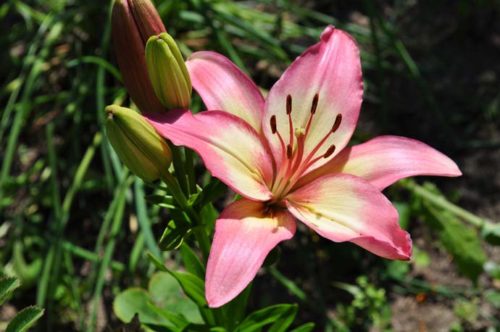
As for the breeder of spherical lily by the breeders of a dark blue, modern science has not yet have a data on the creation of a similar variety of a loyal.
At the same time, it has long been known about the existence in the wild of North America of a bully perennial with blue inflorescences, also related to the family of Lily. Call this flower - "Kamasia". This kind of lily has long ribbon leaves collected into a socket, and it is not large, about 2-4 cm, the flowers are collected in inflorescences of 10 -20 pieces.
On the basis of this wild-growing species of Kamasia, a number of beautiful cultural varieties and varieties that are not believed to the spherical form of lily have been replaced.
- So, the Blue Melody Kamazassia variety is characterized by blue colorful colors and the presence of decorative leaves painted in green with white border along the edge.
- The Kamazassia variety "Orion" is distinguished by darker and large than that of the wild-growing species, flowers. Such loyers are ideal for making alpinarias and rocky gardens.
- The grade of Kamulya Kamuleua forms tender lilac blue flowers. The plant prefers outdoor sun terrain and loamy soil.
Lily Charovid, Plant Application
- Spectacular beautifully blooming varieties of spherical lily are often used to create a variety of flower compositions.
- Lily Charov "Marlene" is also used to create bouquets. Beautiful and spectacular flibers for a long time retain freshness in water.
- In addition, Lilya can be raised at home to any significant date. The main thing is to calculate the time to plan the bulbs in the pot. Naturally, a lily grown in a pot is not capable of fascia. To land a few bulbs at home, take a flower pot, depth and width of at least 30 cm. Before planing, it is mandatory to stratify bulbs. For this, the planting material is placed in the refrigerator for 2 weeks. The procedure contributes to the awakening of the plant. After 2 weeks "hardening", lily bulbs are soaked in potassium permanganate solution by 1.5-2 hours. The disinfected landing material is soaked again, but already in the growth stimulator solution, overnight. After the manipulations conducted, the spherical lily planted into the ground. At the bottom of the container or flower pot lay the drainage layer of pebbles, or clay, then about 10 cm of fertile soil are poured. Posted on the soil bulbs fall asleep the remaining soil. The lucked bulb is watered with warm water and leave a pot in a cool place (about +5 0C) for 1 month. During this time, Lily should be rooted. As for the care, the ground is periodically watered with water. When the first sprouts appear, the pot is rearranged into a bright place and the gradual hardening of the bulbous culture begin. For this, the flower is put on the street, first half an hour, every day increasing the time to 10 hours. When the air temperature stabilizes at a not lower than +10 0C - a pot with Lilia can be left outdoors all night. Already 3 months after the primary germination of the bulbs, Lilia will bloom. During the development of culture, it is important to carry out regular watering, to provide good lighting and heat.
Where and how to buy flaky lilies?
Varietary lilies should be bought in specialized flower shops, garden nurseries or in other proven sales points, incl. Internet network.
In the market, popular and valuable varieties of lilies are better not to acquire, as there is no guarantee that the flower grown in the garden will correspond to the desired variety.
- When buying bulbs of lilies, it is important to pay attention to the quality of this planting material. Healthy full-fledged bulb should be solid, without signs of rotting, damage or disease damage.
- Separate attention should be paid to the appearance of flashes of bulbs, they must be dry, light brown.
- By purchasing the bulb of the ball lily, it is worth paying attention to their size. The larger the seating material - the greater the likelihood of Lily blossoms in the first year after landing. Small bulbs, landed in the ground, will have to grow up for 1-2 vegetative seasons before blossoming.
Spherical lily, landing features
Lily is a grateful flower that is easily rooted and does not require increased attention. Therefore, to grow a ball lily on its plot even a novice flower flower is an amateur.
Until the landing in the soil, the lilies bulbs are stored in a dark, cool place, (for example, in a box with sawdust placed in a cellar or refrigerator).
Consider the key features of the planting of bulbous culture, from the selection of the time and place of landing to directly technologies for the planting of bulbs.
Time and place of landing lily ball
- Landing, as well as a transplant, a chamber garden lily can be carried out both in the spring and in the autumn period. Some flower flowers practice lilies in summer, but taking into account the maximum preservation of the land of the earth around the bulbs.
- More accurate dates of planting bulbs depend on the climatic conditions of a particular region. If we are talking, for example, about the middle lane of Russia, the autumn dates of planting bulbs fall into August-September. And in the warmer areas of the southern region, the landing of bulk "shift" for 1-2 months, tentatively, until October. The main condition is to plant the bulbs about 1-1.5 months before the coming of the first frosts so that they manage to root in the soil.
- Unpretentious frost-resistant lilies do not need winter shelter, but in the regions of risky agriculture, in the case of autumn fit, a plot with planted bulbs is better to hide or inspired. Then, the landing material is 100% attached and will not be subjected to frozen during the winter cold period.
- Spring landing of lily bulbs is held from mid-April to the end of May, also taking into account the weather and climatic conditions of a particular region.
- When choosing a place for landing lily, it is better to stop at sites with scattered sunlight. Perfectly develops flower and in a half sense. At open solar sites, plants overheating, provoking the fading of leaves and a reduction in flowering timing. A deep shadow is also not suitable for the plant, and can lead to a slow growth of culture, curvatting the stems and fallout of all buds.
- Character lilies with high, slender stems are not desirable to plant also in places open to gusty winds or drafts. Otherwise, harsh air masses will "disrupt" buds and can break the perennial plant at all.
- For landing, lilies will not fit the terrain with a high occurrence of groundwater or in lowlands, where water can accumulate after precipitation. In such conditions, bulbous cultures will suffer from excessive humidity and, as a result, to rotate and die.
Agrotechnology landing lily ball
- Unassuming flower culture, lily, can grow almost on any types of soil. At the same time, the optimal development of the loyal is observed on a sugal and subtle soil with the addition of a nutrient leaf. On heavy and meager soil, lilies will grow worse and blossom. The best option is a loose fertile soil with a good drainage layer and a weakness of the medium reaction.
- If the landing of the lilies is carried out in heavy clay soil, it is necessarily necessary to enrich peat, sand and humus. In the sandy soil, on the contrary, you should add clay, humid and peat. In no case can not be added to the soil of fresh manure. Otherwise, the bulbs may die. In addition, Asian lilies do not tolerate the soil with the overaffect of lime. Such sections need mandatory predecomposition preparations in the procedure for making peat.
- As for the application of fertilizers, when the plot in the ground can be added compost or overwhelmed dung. In no case cannot be made in the soil of fresh manure, otherwise it simply "burns out" the entire planting material.
- Before planing lilies on the flower, should be carried out preventive treatment of the bulbs with a solution of carbofos. This acaricidal and insecticidal drug will help neutralize lily bulbs from any pest insects or their larvae.
- Looking bulbs is carried out in pre-prepared wells or grooves, depending on the method of planting.
- The depth of the landing well depends on the size of the bulbs. Usually, digging a hole, 3 times greater than the planting bulb. The average settings of the laying of young bulbs are about 10 cm, large - 20 cm.
- Lily landing agrotechnology is no different from landing any bulbous crops. At the bottom of the hole pour a small layer of sand (drainage), allowing in the future to protect the bulbs from the roting and stagnation of water in the soil.
- After planting bulbs, the wells fall asleep with soil and pour water abundantly.
- If there are many additional short and underdeveloped stems begin to develop a lot of additional short and underdeveloped stalks, it indicates too close planting of bulbs. In this case, it is better to transplant the bulbs for a greater distance from each other so that the plants do not oppress each other.
- Grow lilies in one place is recommended no longer than 4-5 years. After that, the blooms every year become shorter, and the number of buds formed is less. A similar vegetation decline is explained by the depletion and weakening of lily bulb, which means that the plant needs to be rejuvenated.
Lily Charov, Care Rules
Care of the bulbous culture is a set of events, standard for most representatives of the Lily. Resistant to adverse conditions, the lily of the spherical needed a simple caring: watering, loosening and feeding.
Watering, loosening and mulching lily spherical
- Early spring, when stable warm weather is installed, soil on the site where lilies are planted, loosen. Swimming is carried out not deep enough to damage, begin to germinate the bulbs. Swimming is carried out after each watering (the next day), which contributes to the preservation of moisture in the ground and an increase in soil aeration. Otherwise, lily roots can simply "suffocate" in too dense and airproof soil.
- In addition to loosenings, at the flower bed, it is necessary to regularly remove weary grass.
- As for the irrigation, the lilies of row needed regularly moderate soil moisturizing. Lilies are quite harmonious plants, which, at the same time, do not carry water stagnation or excessive humidification. The overvocation often provokes the rotting of a bulbous culture.
- To avoid overheating and drying the root lily root system, experienced flower products use such a simple and efficient reception as mulching. Mulch the plot is best nutritious material: a motor or peat crumb. It is also recommended that mulch use a cheva that will allow not only to preserve the necessary humid soil microclimate, but also to maintain the weakness reaction optimal for the development of lily. Valuated plot of loosening, there is no need.
- In the fall, in early October, watering the plants stop. Culture is starting to cook for wintering.
Falker and trimming of lily spherical
- The main feeding of many years of culture is carried out three times during the growing season.
- The first feeding of the Lilynik is carried out during the period of the most active growth of the plant, at the stage of the appearance of the first leaves. At this time it is advisable to make nitrogen-containing fertilizers in the soil.
- The second feeding is carried out during the formation and staining of the loyal buds. The bulbous culture on the introduction of organics, for example, a slightly concentrated cowber solution in proportion of 1:10 is excellent. If there is no possibility of making organic fertilizers, - use balanced mineral complexes, at the rate of 50 g per 1m 2.
- The last feeding of culture is carried out after the end of flowering, to restore the vitality of the bulbs. During this period (in July - August), fertilizers contribute to the ground with a predominance of elements such as potassium and phosphorus.
- In addition, to strengthen the flowering of Lily "Marlene", it is recommended 1-2 times for the entire season to enter wood ash in soil. Wood ash is a source of valuable and useful elements that stimulate the full growth and development of the plant. It contains such trace elements that ensure balanced nutrition of plants: potassium, magnesium, calcium, sodium. Good results also shows the use of bone flour area rich in calcium and phosphorus.
- It is the opinion that, often, the phenomenon of the fasciance can provoke a large number of fertilizers made. Therefore, many flower products are trying to feed the spherical lily every week (from the appearance of the first germs before the end of flowering), but the connection of such a leaving with the mutation process of the lily of this variety has not yet been proven.
- After the lily of the ballly plowed, you should remove all the faded inflorescences along with the urins (it cuts up about 2 \\ 3 escapes). Such manipulation will prevent the formation of seeds and do not waste the vitality of the bulbs.

PREPARATION OF LILA SHARE TO WINTER
- In the fall, the leaves of lilies begin to shrust and lose their decorativeness. During this period, it is not necessary to hurry to trim the green mass of the plant, since the metabolism between the flowerpiece and the root continues until the stem oven. After a drying, stem and leaves are cut to the soil level.
- Lily Schroovoid resistant to the effects of cold weather and perfectly winter in the soil without additional shelter. Only in the regions with harsh and low-snowing winter, you can climb the area with fallen leaves, humus, wood sawdusts or to cover the flower lap.
- Until the winter entry into full force, the cropped lilies are recommended to cover the film with small holes through which air ventilation will occur. This is done so that an excess moisture is accumulated on the site, which in frosts can provoke the death of bulbs. With the onset of frosts, such a protective film is removed.
Diseases and pests of lily ball
- Lilies, like other floral cultures, may suffer from some diseases or exposed insect pests.
- In cool rainy weather on the leaves of spherical lily, brown specks can form, which, with time, "go" on buds. These signs indicate such a disease as gray rot. For the "treatment" of the disease, the plant spraying is carried out by a fungicidal preparation, for example "Khoma" (at the rate of 40 g per 10 liters of water). Re-processing is carried out after 1 week.
- With lily damage, such as "rust", the leaves of the plant are removed, and the culture is treated with "phytosporin" (at the rate of 1.5 g per 1 liter of water).
- Fusariosis or bulbous rot is practically not amenable to treatment if the bulbs are in the soil. The only option is to prevent infection - preventive treatment of planting material. For this purpose, this preparation is used as "Fundazole" (at the rate of 2 g of 10 liters of water). The bulbs are placed in a solution of Fundazola for 2-3 hours, after which it is planted into the ground. Then, during the growing season, the soil is additionally spilled, and the plant is sprayed with phytosporin preparation.
- As for pests, spherical lilies may suffer from ticks. A variety of insecticides are used to combat insects: "phytodeterm" (4 ml per 1 liter of water), "Aktellik" (2 ml on 2 liters of water). Spraying spend several times, with an interval of 8-9 days, until the complete disappearance of "parasites".
- In the fight against lily beetles, bear and wires, such an insecticidal preparation can be used as "Fufanon" (2 ml of 1.5 liters of water).
Lilia breeding spherical
Lily multiplies in several ways: young bulbs (kids), scales and seeds.

- The reproduction of children is considered one of the easiest and most affordable. The bulbs, which plan to separate, dig out in the fall when the plant is prepared for the "rest period". Young bulbs, kids, are easily separated from the maternal bulbs, cleaned from the ground and dried. If stains are noticeable on the scales of the planting material - they are cut, "etched" in the potassium permanganate solution and dried. Memorial, dry roots are removed, alive - shorten up to 15 cm. In the spring, prepared and sorted (in size) the bulbs are planted into the open ground. The smallest specimens of the bulbs can be planted separately, to grow in shovel.
- The reproduction of flakes is a less common way, which still uses flower flowers. For this, early spring, with adult bulbs, several scales are removed, which are then treated in a light solution of manganese, dried, mixed with sawdust and placed in a bag. The bag is closed and left indoors with a temperature of about 20 0C. After 1.5-2 weeks, scales begin to form their own roots. By giving the planting material to "grow up" to 1 cm, they are planted into a container with a nutritious and loose soil substrate. Grown bulbs in June land in an open ground. Adult bulb - "donor" are not thrown away, and planted in a pot for growing with a subsequent transplant in open ground.
- The seed method of breeding the ball lily is the most difficult, long and time consuming. In addition, as it is known, the reproduction of seeds does not guarantee the preservation of the varietal signs of the plant. After ripening, collecting and sowing seeds, a small bulb is formed, which will smallest for another 4-7 years. Only having received the finally large size of the bulbs, the plant will form a full-fledged bloomer with buds and can already bloom every year.
Thus, an Asian hybrid, a spherical lily, has a number of merits: Easily and quickly rooted, perfectly tolerate cold, it blooms early, has a unique ability to form a huge number of flower buds.
Lily of the spherical - strong and unpretentious culture, it looks impressive during the flowering period. In addition to high ornamental qualities, the Lilynik is often used as a basis for creating new varieties.
Grow this flower on its plot does not represent any difficulty. "It is not good" Lukovy Perennial Looking and Pumping Technology will master even a novice flower model.

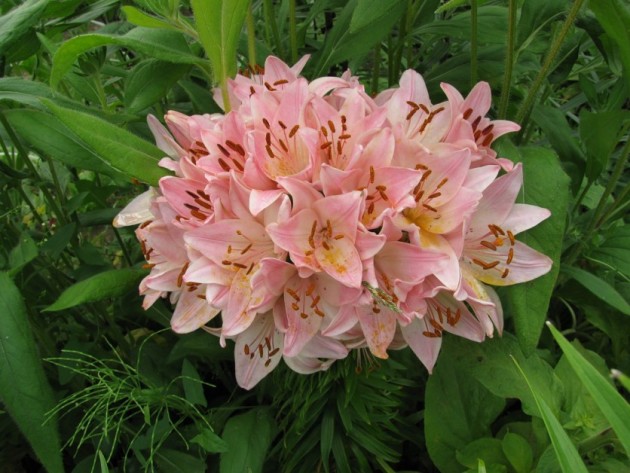
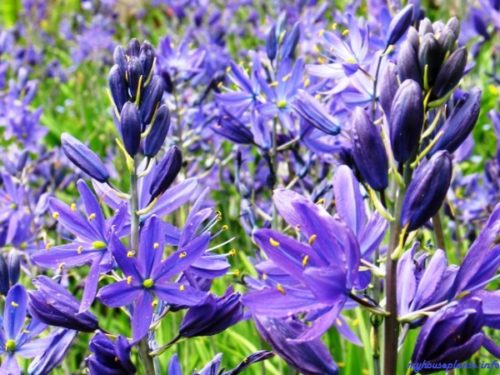
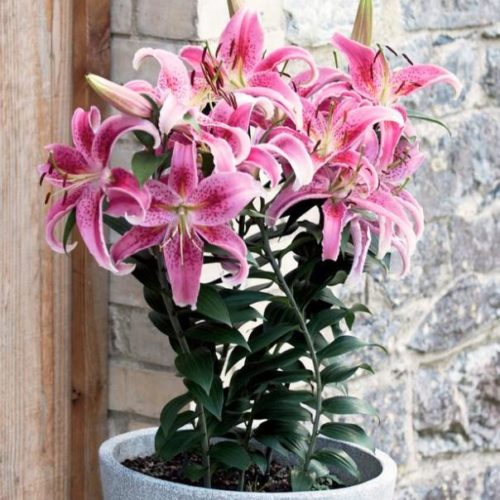
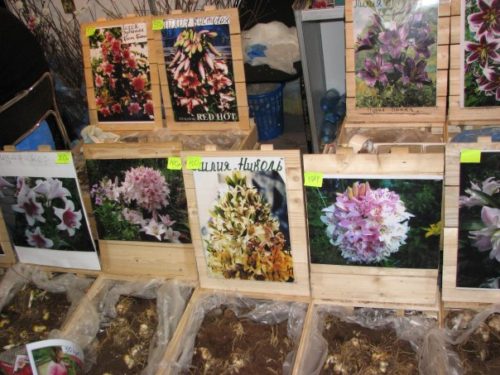

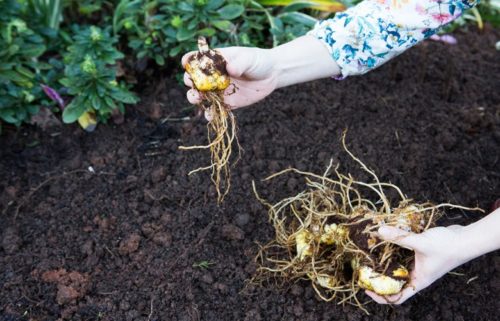


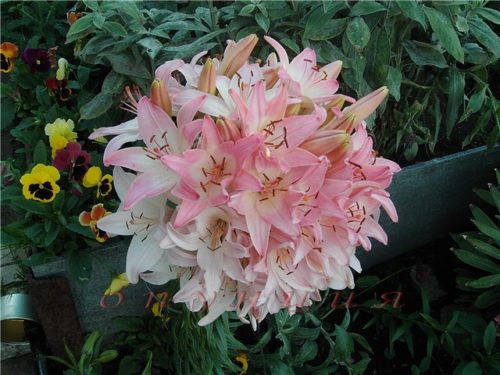
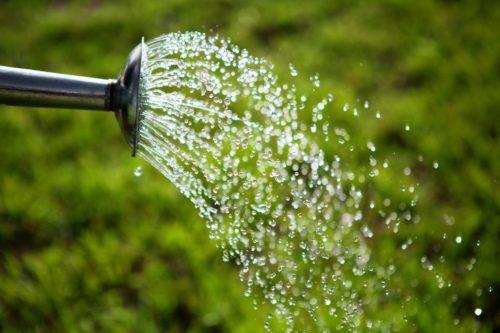

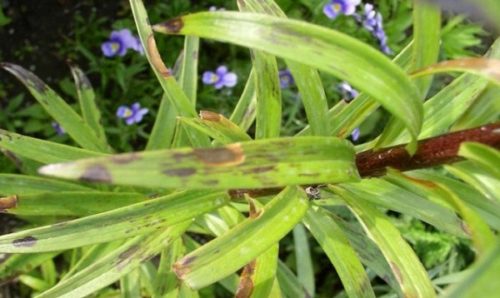


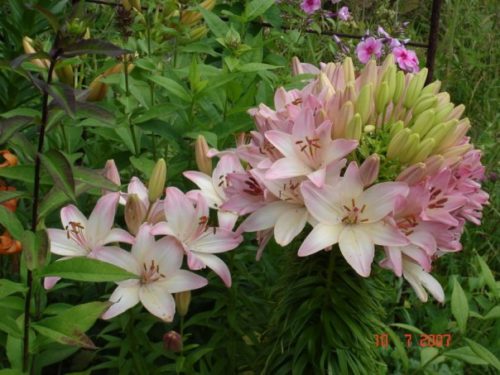
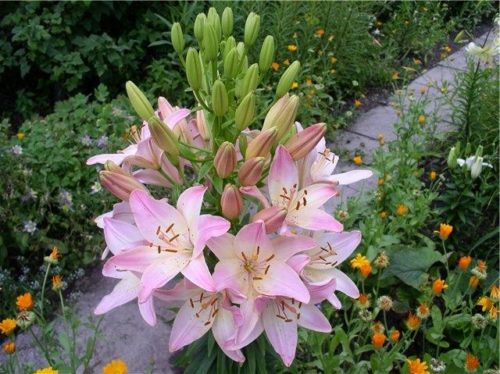
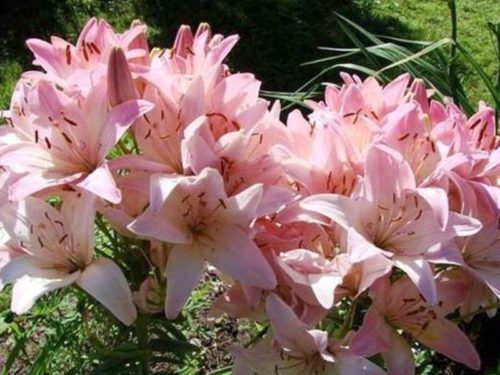












 Start a discussion ...
Start a discussion ...